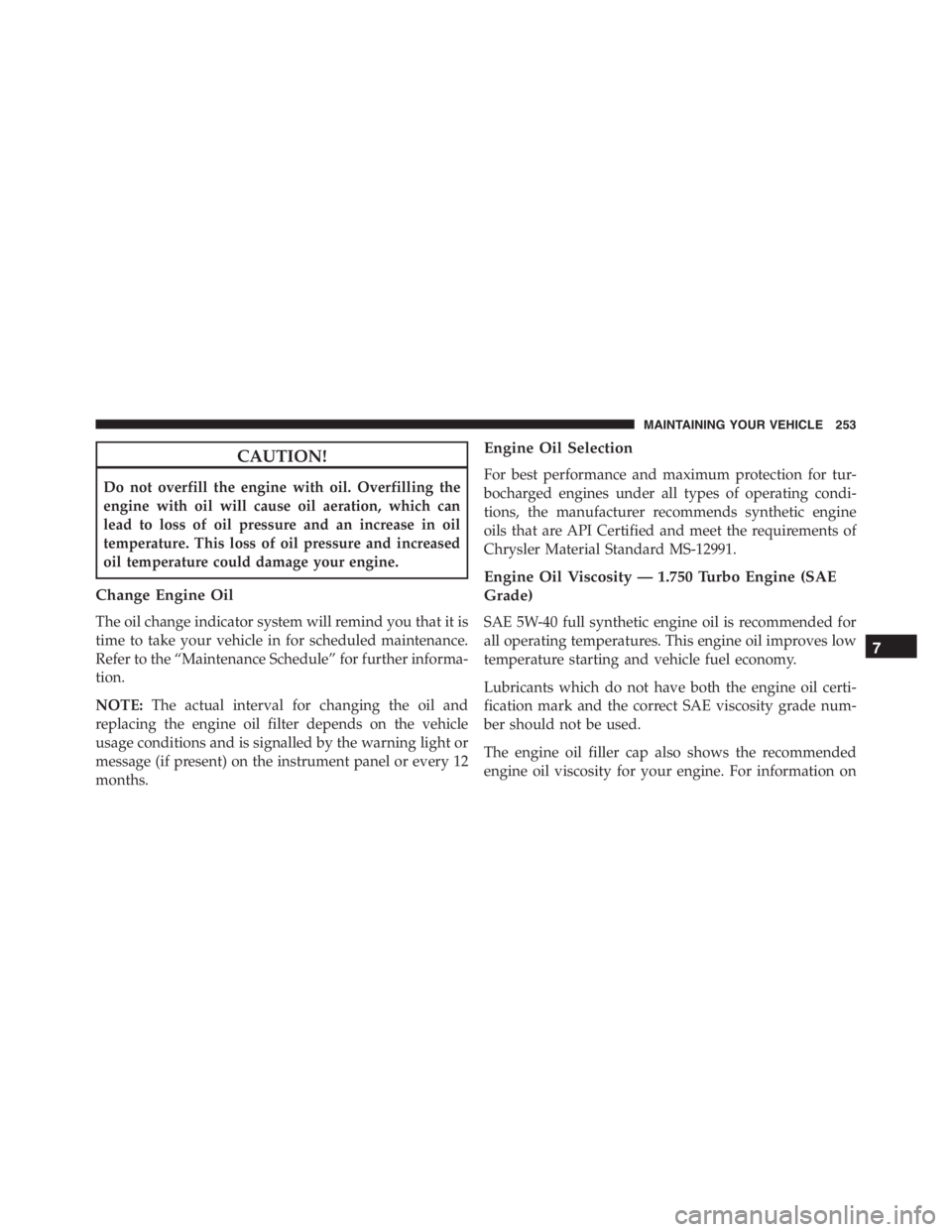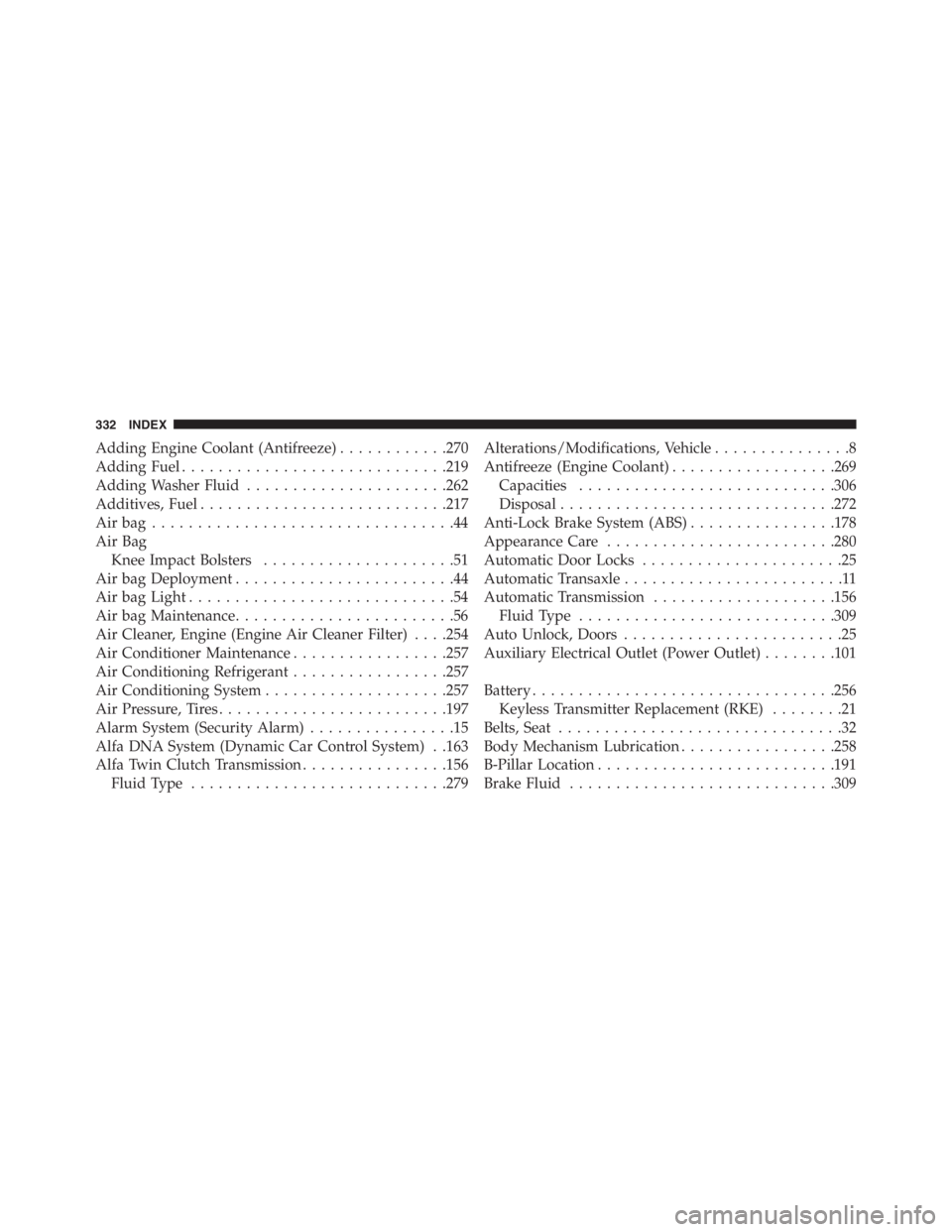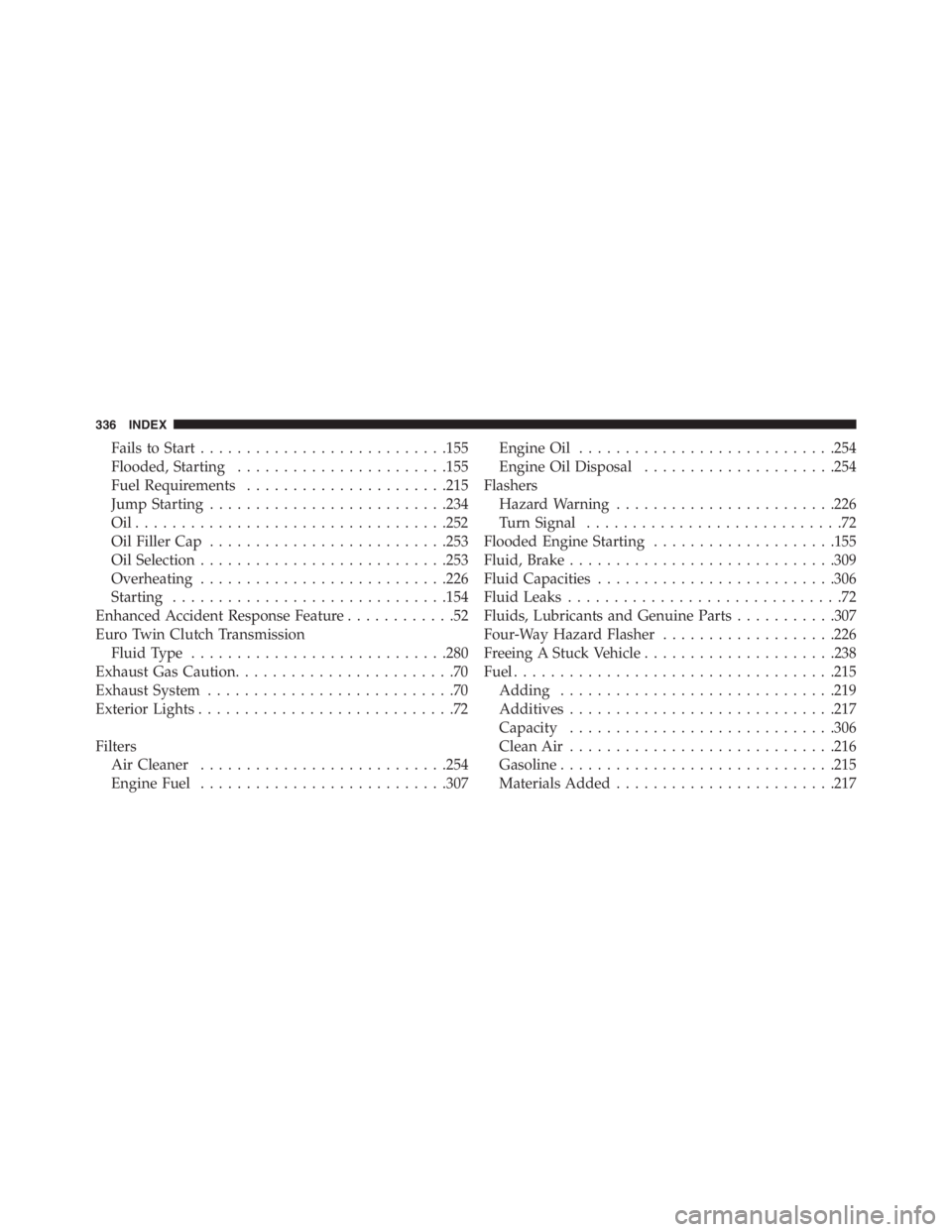Page 214 of 348

CAUTION!(Continued)
•After inspecting or adjusting the tire pressure,
always reinstall the valve stem cap. This will
prevent moisture and dirt from entering the valve
stem, which could damage the Tire Pressure Moni-
toring Sensor.
NOTE:
•The TPMS is not intended to replace normal tire care
and maintenance, or to provide warning of a tire
failure or condition.
•The TPMS should not be used as a tire pressure gauge
while adjusting your tire pressure.
•Driving on a significantly under-inflated tire causes
the tire to overheat and can lead to tire failure.Under-inflation also reduces fuel efficiency and tire
tread life, and may affect the vehicle’s handling and
stopping ability.
•The TPMS is not a substitute for proper tire mainte-
nance, and it is the driver ’s responsibility to maintain
correct tire pressure using an accurate tire gauge, even
if under-inflation has not reached the level to trigger
illumination of the Tire Pressure Monitoring Telltale
Light.
•Seasonal temperature changes will affect tire pressure,
and the TPMS will monitor the actual tire pressure in
the tire.
Base System
This is the TPMS warning indicator located in the
instrument cluster.
212 STARTING AND OPERATING
Page 221 of 348
WARNING!(Continued)
•Guard against carbon monoxide with proper main-
tenance. Have the exhaust system inspected every
time the vehicle is raised. Have any abnormal
conditions repaired promptly. Until repaired, drive
with all side windows fully open.
ADDING FUEL/SMART FUEL
NOTE:
•The�Smart Fuel�is a device placed on the top of the
filler pipe, it opens and closes automatically when the
fuel nozzle is inserted or extracted.
•Only the correct nozzle size diameter allows the flap
door to open when the nozzle is inserted.Refueling Procedure
1. Open the fuel filler door pulling towards outside.
2. There is no fuel filler cap. A flap door inside the pipe
seals the system.
Fuel Filler Door Location
5
STARTING AND OPERATING 219
Page 255 of 348

CAUTION!
Do not overfill the engine with oil. Overfilling the
engine with oil will cause oil aeration, which can
lead to loss of oil pressure and an increase in oil
temperature. This loss of oil pressure and increased
oil temperature could damage your engine.
Change Engine Oil
The oil change indicator system will remind you that it is
time to take your vehicle in for scheduled maintenance.
Refer to the “Maintenance Schedule” for further informa-
tion.
NOTE:The actual interval for changing the oil and
replacing the engine oil filter depends on the vehicle
usage conditions and is signalled by the warning light or
message (if present) on the instrument panel or every 12
months.
Engine Oil Selection
For best performance and maximum protection for tur-
bocharged engines under all types of operating condi-
tions, the manufacturer recommends synthetic engine
oils that are API Certified and meet the requirements of
Chrysler Material Standard MS-12991.
Engine Oil Viscosity — 1.750 Turbo Engine (SAE
Grade)
SAE 5W-40 full synthetic engine oil is recommended for
all operating temperatures. This engine oil improves low
temperature starting and vehicle fuel economy.
Lubricants which do not have both the engine oil certi-
fication mark and the correct SAE viscosity grade num-
ber should not be used.
The engine oil filler cap also shows the recommended
engine oil viscosity for your engine. For information on
7
MAINTAINING YOUR VEHICLE 253
Page 308 of 348
4. Install luggage compartment roof light by inserting it
in its correct position, first on one side and then
pressing on the other side until it clicks into place.
FLUID CAPACITIES
U.S. Metric
Fuel (Approximate)
1.750 Turbo Engine 10.5 Gallons 40 Liters
Reserve Fuel 1.1 Gallons 4 Liters
Engine Oil with Filter
1.750 Turbo Engine 6.1 Quarts 5.8 Liters
Cooling System
1.750 Turbo Engine (MOPAR®
Antifreeze/Engine Coolant 10
Year/150,000 Mile Formula).11.2 Quarts 10.6 Liters
306 MAINTAINING YOUR VEHICLE
Page 309 of 348
FLUIDS, LUBRICANTS AND GENUINE PARTS
Engine
Component Fluid, Lubricant, or Genuine Part
Engine Coolant - 1.750 Turbo Engine We recommend you use MOPAR® Antifreeze/Coolant
10 Year/150,000 Mile Formula OAT (Organic Additive
Technology) or equivalent meeting the requirements of
Chrysler Material Standard MS.90032.
Engine Oil - 1.750 Turbo Engine We recommend you use SAE 5W-40 API Certified
Synthetic Engine Oil, meeting the requirements of
Chrysler Material Standard MS-12991. Refer to your
engine oil filler cap for correct SAE grade.
Engine Oil Filter - 1.750 Turbo Engine We recommend you use MOPAR® Engine Oil Filter.
Spark Plugs - 1.750 Turbo Engine We recommend you use MOPAR® Spark Plugs. *
Fuel Selection - 1.750 Turbo Engine Use Only 91 Octane or higher.
7
MAINTAINING YOUR VEHICLE 307
Page 334 of 348

Adding Engine Coolant (Antifreeze)............270
Adding Fuel.............................219
Adding Washer Fluid......................262
Additives, Fuel...........................217
Airbag.................................44
Air Bag
Knee Impact Bolsters.....................51
Air bag Deployment........................44
Air bag Light.............................54
Air bag Maintenance........................56
Air Cleaner, Engine (Engine Air Cleaner Filter). . . .254
Air Conditioner Maintenance.................257
Air Conditioning Refrigerant.................257
Air Conditioning System....................257
Air Pressure, Tires.........................197
Alarm System (Security Alarm)................15
Alfa DNA System (Dynamic Car Control System) . .163
Alfa Twin Clutch Transmission................156
Fluid Type............................279Alterations/Modifications, Vehicle...............8
Antifreeze (Engine Coolant)..................269
Capacities............................306
Disposal..............................272
Anti-Lock Brake System (ABS)................178
Appearance Care.........................280
Automatic Door Locks......................25
Automatic Transaxle........................11
Automatic Transmission....................156
Fluid Type............................309
Auto Unlock, Doors........................25
Auxiliary Electrical Outlet (Power Outlet)........101
Battery.................................256
Keyless Transmitter Replacement (RKE)........21
Belts, Seat...............................32
Body Mechanism Lubrication.................258
B-Pillar Location..........................191
Brake Fluid.............................309
332 INDEX
Page 336 of 348

Inspection............................272
Points to Remember.....................271
Pressure Cap..........................271
Selection of Coolant (Antifreeze).............269
Corrosion Protection.......................280
Cupholders.............................104
Customer Assistance.......................322
Daytime Running Lights.....................86
Dealer Service............................251
Deck Lid................................29
Deck Lid, Release..........................82
Defroster, Windshield.......................71
Delay (Intermittent) Wipers...................91
Diagnostic System, Onboard.................250
Dimmer Control...........................88
Disposal
Antifreeze (Engine Coolant)................272
Door Locks..............................23Child-Protection Door Lock — Rear Doors......25
Power Door Locks.......................20
Doors..................................23
Driving
Through Flowing, Rising, or Shallow Standing
Water................................170
Electrical Outlet, Auxiliary (Power Outlet)........101
Electrical Power Outlets.....................101
Electric Remote Mirrors......................77
Electronic Brake Control System...............175
Electronic Speed Control (Cruise Control).........93
Electronic Vehicle Information Center (EVIC)
Activation Trip Data (Trip B On)............129
Autoclose.............................132
Average Fuel Consumption................141
Average Speed.........................141
Buzzer Volume (Adjusting The Failure/Warning
Buzzer Volume)........................134
334 INDEX
Page 338 of 348

Fails to Start...........................155
Flooded, Starting.......................155
Fuel Requirements......................215
Jump Starting..........................234
Oil..................................252
Oil Filler Cap..........................253
Oil Selection...........................253
Overheating...........................226
Starting..............................154
Enhanced Accident Response Feature............52
Euro Twin Clutch Transmission
Fluid Type............................280
Exhaust Gas Caution........................70
Exhaust System...........................70
Exterior Lights............................72
Filters
Air Cleaner...........................254
Engine Fuel...........................307Engine Oil............................254
Engine Oil Disposal.....................254
Flashers
Hazard Warning........................226
Turn Signal............................72
Flooded Engine Starting....................155
Fluid, Brake.............................309
Fluid Capacities..........................306
Fluid Leaks..............................72
Fluids, Lubricants and Genuine Parts...........307
Four-Way Hazard Flasher...................226
Freeing A Stuck Vehicle.....................238
Fuel...................................215
Adding..............................219
Additives.............................217
Capacity.............................306
Clean Air.............................216
Gasoline..............................215
Materials Added........................217
336 INDEX